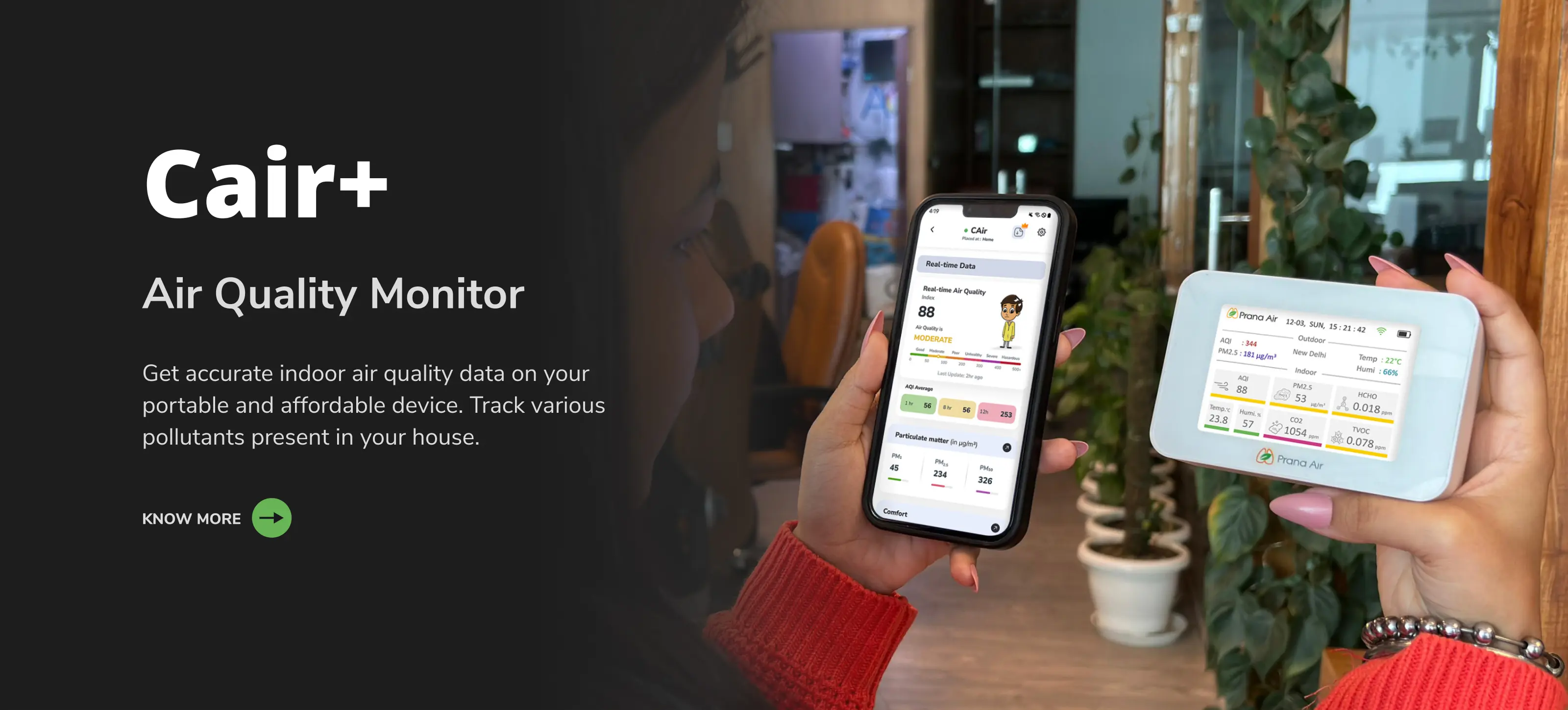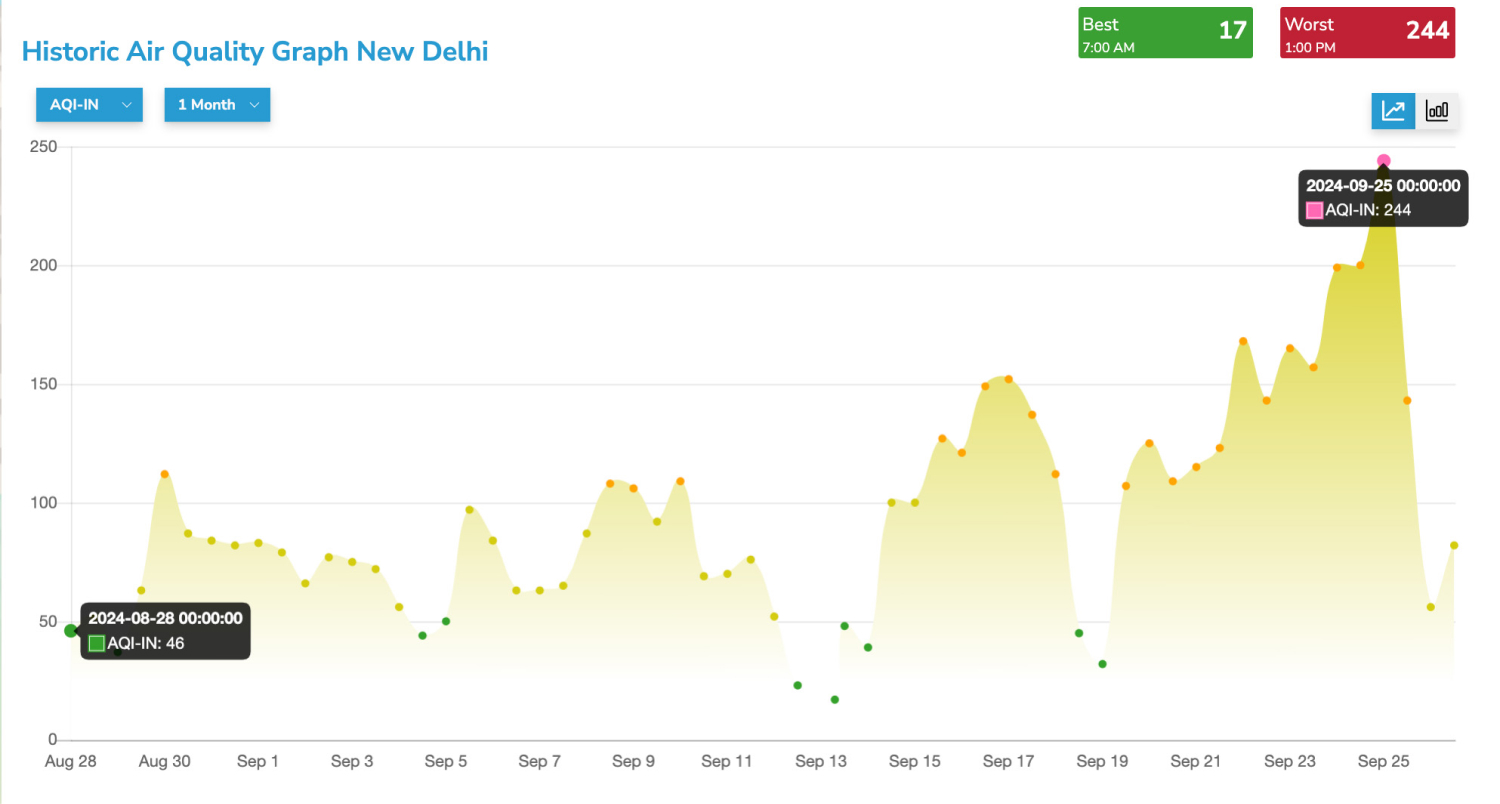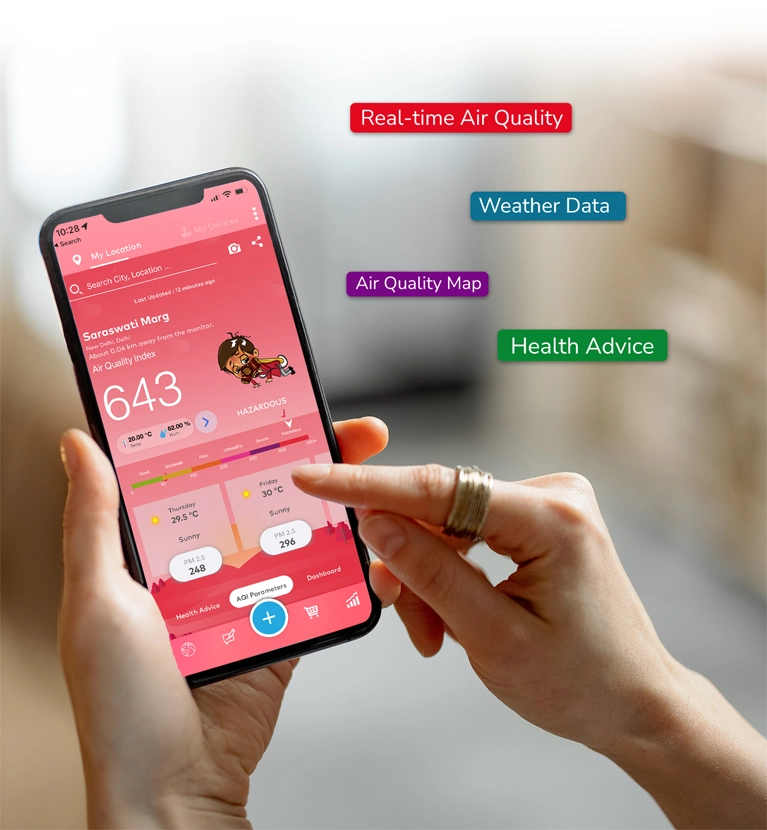Kota Paling Berpolusi di India
Kota Paling Sedikit Terpolusi di India
Eksposur Perbandingan dengan Noida
24 hrs avg AQI
Polutan Udara Utama di Noida
PM2.5 7.7X
Konsentrasi PM2.5 saat ini dalam Noida adalah 7.7 times above batas yang direkomendasikan yang diberikan oleh nilai pedoman kualitas udara 24 jam WHO.
Noida - Lokasi Tingkat Polusi Udara
| LOKASI | Status | AQI-US | AQI-IN | PM2.5 | PM10 | Temp | Humid |
|---|---|---|---|---|---|---|---|
| Knowledge Park Iii | POOR | 178 | 260 | 108 | 228 | 29 | 43 |
| Sector 1 | POOR | 186 | 303 | 124 | 270 | 28 | 36 |
| Omicron 1A | POOR | 180 | 270 | 111 | 244 | 29 | 43 |
| Sector Omega 1 | POOR | 183 | 290 | 117 | 249 | 29 | 43 |
| D5 LOGIX INFOTECH PARK | POOR | 185 | 301 | 121 | 247 | 30 | 28 |
Kondisi Cuaca di Noida
Waktu lokal
Wind speed
33 km/h
UV Index
16
Pressure
800 mb
Saran Kesehatan Untuk Noida
Pakai Masker
Tetap di dalam ruangan
jendela
Gunakan Pemurni
Keluarga
Noida Prakiraan Kualitas Udara
134
AQI
134
AQI
134
AQI
134
AQI
134
AQI
134
AQI
134
AQI
Noida
AQI Kalender
Most Polluted Cities in India
Least Polluted Cities in India
Comparative Exposure with Noida
24 hrs avg AQI
FAQ dari Noida Indeks Kualitas Udara
(Pertanyaan yang Sering Diajukan)
Jawaban cepat untuk beberapa pertanyaan umum tentang polusi udara Noida.
Kualitas udara waktu nyata di Noida adalah 285 (POOR) AQI sekarang. Ini terakhir diperbarui 3 minutes ago .
Konsentrasi PM2.5 saat ini dalam Noida adalah 116 (µg/m³). Organisasi Kesehatan Dunia (WHO) merekomendasikan 15 µg/m³ sebagai konsentrasi ambang batas PM2.5 selama 24 jam rata-rata. Saat ini, konsentrasinya adalah 4.64 kali batas yang disarankan.
Secara umum kualitas udara pada Noida mulai memburuk pada akhir Oktober. Musim dingin adalah musim yang paling parah terkena polusi udara.
Anda harus memakai masker N95 yang baik saat Anda pergi ke luar ruangan Noida sampai AQI membaik hingga kisaran sedang.
Orang yang pergi ke kantor harus menghindari kendaraan pribadi dan menggunakan transportasi umum atau carpooling.
(i) Penyebab utama polusi udara luar ruangan adalah partikel padat dan cair yang disebut aerosol & gas dari emisi kendaraan, aktivitas konstruksi, pabrik, pembakaran jerami & bahan bakar fosil, dan kebakaran hutan, dll.
(ii) Penyebab utama polusi udara dalam ruangan adalah gas berbahaya dari bahan bakar memasak (seperti kayu, limbah tanaman, arang, batu bara dan kotoran), lembab, asap jamur, bahan kimia dari bahan pembersih, dll.
Polusi udara dalam ruangan di Noida sama berbahayanya dengan polusi luar ruangan, karena polusi udara masuk ke dalam rumah atau bangunan melalui pintu, jendela dan ventilasi.
Di Noida , Anda harus menggunakan pembersih udara atau mesin udara segar di rumah atau kantor dalam ruangan dan menutup semua pintu, jendela dan ventilasi ketika indeks kualitas udara luar (aqi) di Noida sangat tinggi. Ventilasi yang tepat sangat disarankan hanya jika kualitas udara luar ruangan membaik dan kisaran AQI sedang.
Peringkat AQI Kota & Negara Paling Berpolusi di Dunia
Kota paling tercemar secara real-time, dan peringkat AQI historis bulanan & tahunan untuk kota & negara
Solusi Kualitas Udara untuk Noida
Cari tahu pemantau & solusi kualitas udara Prana Air untuk memerangi polusi udara di kota Anda.
Noida POLUSI UDARA
Noida POLUSI UDARA
Noida is a part of the National Capital Region, India, and is located in Gautam Buddha Nagar of Uttar Pradesh. The population of Noida was 642,381 (Census of India, 2011). Considered to be one of the most polluted cities in the world, and listed in the top 10 polluting areas in the world, Noida's air pollution levels are extremely dangerous. Air Quality in Noida can sometimes be worse than in Delhi and other north Indian states.
Noida produces large amounts of air pollutants, these are:
● Emissions from Automobiles: Due to heavy traffic, the average levels of black carbon, carbon monoxide, and particulate matter (PM) found on Noida's roadways are extremely high. According to a study conducted by CPCB, the particulate concentration was ten times greater than typical levels. The study claims that 80 percent of the citizens suffer from eye or skin discomfort as a result of high concentrations of black carbon, CO, and PM. Each of the crossings sees a large number of traffic every day, with estimates ranging from 20,000 to 50,000 passenger car units each day, as estimated by the officials.
● Road dust: Noida residents claim that the concerned authorities are not performing their job of maintaining the poor conditions of roads, open spaces, and pavements that prevents dust from mixing with the air and causing air pollution. According to experts, 'Overly polluted air can harm citizens' health, particularly youngsters and the elderly.
● Construction and extraction: Dust pollution from construction activities without adequate precautions continue to choke Noida - one of the most polluted cities in Delhi-NCR, despite the graded action plan (GRAP) continuing to be in force across the city '(a report by Hindustan Times). As reported by a resident living near a construction site', during the daytime strong winds often carry soil and larger dust particles from the construction site to their houses.
● Industrial Emissions: Industrial emissions are consistent season after season. According to a research published in August 2018, industries were responsible for 22% of air pollution.
● Stubble and trash burning: Noida produces approximately 200-250 tonnes of garbage per day. If this garbage is not disposed of in the most environment - friendly manner possible, rather than burning, it might result in serious health problems among the citizens. According to experts, stubble burning accounts for at least 15-20% of the city's air pollution.
Reports, Facts, and Figures About Noida Air Quality Index
● Uttar Pradesh Pollution Control Board (UPPCB) says, dust is the major source of pollution in most NCR districts, followed by industrial emissions.
● An August 2018 report says, PM10 is the most prominent pollutant in NCR cities. In Noida, during the summer months, 47% of the PM10 in the atmosphere was because of dust, 22% was contributed by industries, 13% by vehicles, 12% by biomass, and 6% by others. During winters, 29% of the PM10 was caused by dust, 25% each by industries and vehicles, 12% by biomass, and 9% by others.
● A Bimhow research says, 'the construction sector contributes to 23% of air pollution, 50% of climatic change, 40% of water pollution, and 50% of landfill wastes.
Health Impacts due to Noida - 'very poor' PM2.5 conditions
1. Vehicle emissions aggravate asthma, impair lung capacity, and make people more vulnerable to respiratory ailments like pneumonia and bronchitis.
2. According to the study by Järlskog et al., road dust contains a large number of black particles <100 µm. These smaller MPs have a greater potential to harm human health, particularly in the cardiorespiratory system.
3. Heart disease, lung cancer, asthma, and acute lower respiratory infection are all linked to construction and demolition operations.
4. Birth defects, cancer, immune function abnormalities, kidney and liver dysfunction, lung and respiratory ailments, and neurotoxic disorders are all linked to industrial pollution.
5. Cancers, liver disorders, immune system, endocrine, and reproductive system dysfunction, as well as effects on the developing neurological system and other developmental events.
Action Plans By Uttar Pradesh Government
The Uttar Pradesh Pollution Control Board is monitoring Noida's ambient air quality and has planned to take the following initiatives for both short and long-term periods:- 1. Vehicle emission control
- 2. Suspension of road dust and other fugitive emissions control
- 3. Control of emissions from biomass/crop residue/garbage/municipal solid waste burning
- 4. Control of industrial emissions
- 5. Control of air pollution from construction and demolition activities



























